Potrebujeme váš súhlas na využitie jednotlivých dát, aby sa vám okrem iného mohli ukazovať informácie týkajúce sa vašich záujmov. Súhlas udelíte kliknutím na tlačidlo „OK“.
ASTM C42/C42M-13
Standard Test Method for Obtaining and Testing Drilled Cores and Sawed Beams of Concrete
Automaticky preložený názov:
Štandardná skúšobná metóda pre získavanie a testovanie vŕtané jadier a rezal trámy betónu
NORMA vydaná dňa 1.1.2013
Informácie o norme:
Označenie normy: ASTM C42/C42M-13
Poznámka: NEPLATNÁ
Dátum vydania normy: 1.1.2013
Kód tovaru: NS-13331
Počet strán: 7
Približná hmotnosť: 21 g (0.05 libier)
Krajina: Americká technická norma
Kategória: Technické normy ASTM
Kategórie - podobné normy:
Anotácia textu normy ASTM C42/C42M-13 :
Keywords:
compressive strength, concrete coring, concrete sawing, concrete strength, flexural strength, splitting tensile strength, ICS Number Code 91.100.30 (Concrete and concrete products)
Doplňujúce informácie
| Significance and Use | ||||||||||||||||||||||
|
3.1 This test method provides standardized procedures for obtaining and testing specimens to determine the compressive, splitting tensile, and flexural strength of in-place concrete. 3.2 Generally, test specimens are obtained when doubt exists about the in-place concrete quality due either to low strength test results during construction or signs of distress in the structure. Another use of this method is to provide strength information on older structures. 3.3 Concrete strength is affected by the location of the concrete in a structural element, with the concrete at the bottom tending to be stronger than the concrete at the top. Core strength is also affected by core orientation relative to the horizontal plane of the concrete as placed, with strength tending to be lower when measured parallel to the horizontal plane.3.4 The strength of concrete measured by tests of cores is affected by the amount and distribution of moisture in the specimen at the time of test. There is no standard procedure to condition a specimen that will ensure that, at the time of test, it will be in the identical moisture condition as concrete in the structure. The moisture conditioning procedures in this test method are intended to provide reproducible moisture conditions that minimize within-laboratory and between-laboratory variations and to reduce the effects of moisture introduced during specimen preparation. 3.5 The measured compressive strength of a core will generally be less than that of a corresponding properly molded and cured standard cylinder tested at the same age. For a given concrete, however, there is no unique relationship between the strengths of these two types of specimens (see Note 3). The relationship is affected by many factors such as the strength level of the concrete, the in-place temperature and moisture histories, the degree of consolidation, batch-to-batch variability, the strength-gain characteristics of the concrete, the condition of the coring apparatus, and the care used in removing cores. 3.6 The “specifier of the tests”
referenced in this test method is the individual responsible for
analysis or review and acceptance of core test results.
3.7 The apparent compressive
strength of concrete as measured by a core is affected by the
length-diameter ratio (L/D) of the core as tested and this must be
considered in preparing core specimens and evaluating test
results.
|
||||||||||||||||||||||
| 1. Scope | ||||||||||||||||||||||
|
1.1 This test method covers obtaining, preparing, and testing cores drilled from concrete for length or compressive strength or splitting tensile strength determinations. This test method is not applicable to cores from shotcrete. 1.2 The values stated in either SI
units or inch-pound units are to be regarded separately as
standard. The values stated in each system may not be exact
equivalents; therefore, each system shall be used independently of
the other. Combining values from the two systems may result in
non-conformance with the standard.
1.3 The text of this standard references notes and footnotes that provide explanatory material. These notes and footnotes (excluding those in tables and figures) shall not be considered as requirements of the standard. 1.4 This standard does not purport to address the safety concerns, if any, associated with its use. It is the responsibility of the user of this standard to establish appropriate safety and health practices and determine the applicability of regulatory limitations prior to use. |
||||||||||||||||||||||
| 2. Referenced Documents | ||||||||||||||||||||||
|
Podobné normy:
Historická
1.12.2013
Historická
1.7.2010
Historická
1.12.2013
Historická
15.12.2013
Historická
1.4.2013
Historická
15.6.2010
Odporúčame:
Aktualizácia technických noriem
Chcete mať istotu, že používate len platné technické normy?
Ponúkame Vám riešenie, ktoré Vám zaistí mesačný prehľad o aktuálnosti noriem, ktoré používate.
Chcete vedieť viac informácií ? Pozrite sa na túto stránku.


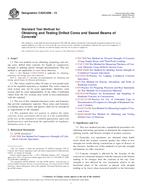
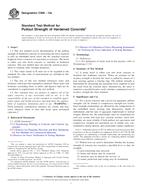 ASTM C900-13a
ASTM C900-13a ASTM C915-79(2010)..
ASTM C915-79(2010).. ASTM C918/C918M-13..
ASTM C918/C918M-13..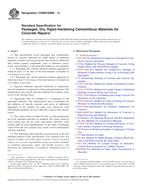 ASTM C928/C928M-13..
ASTM C928/C928M-13..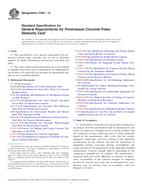 ASTM C935-13
ASTM C935-13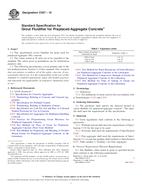 ASTM C937-10
ASTM C937-10
 Cookies
Cookies
